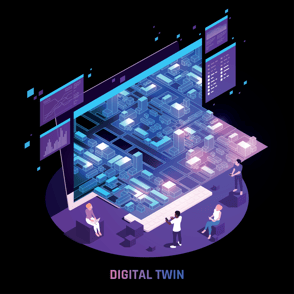 Advances in information technology over the past 30 years have created a foundation for improved manufacturing productivity that is often dubbed the Second Industrial Revolution. In the first revolution electricity was the underlying technology. But it was the application of this technology to a new manufacturing model... the assembly line... that created the productivity break-through. Today, information technology is serving as the foundation for another new model... the industry platform.
Advances in information technology over the past 30 years have created a foundation for improved manufacturing productivity that is often dubbed the Second Industrial Revolution. In the first revolution electricity was the underlying technology. But it was the application of this technology to a new manufacturing model... the assembly line... that created the productivity break-through. Today, information technology is serving as the foundation for another new model... the industry platform.
This is the second in a series of posts drawing from our vision statement for the future of infrastructure manufacturing. Today we discuss how manufacturers can provide a quantum leap in the value that they offer by using a customer-facing platform to provide seamless data sharing.
The primary benefits of a supply chain platform are that it provides:
- Seamless engagement between customers and vendors;
- Reduced friction in the commerce between the parties; and therefore
- Reduced costs to the consumer.
The G20 estimates a $15 Trillion gap between demand and expected funding resources for infrastructure investment over the next 25 years, leaving the present delivery model inadequate to serving the global need. Therefore, the cost reductions available through the platform model will be essential.
But the exciting part is the new value than manufacturers can offer. Manufacturers can already include important QA information in the products they sell by tagging them with RFID tags using Idencia. The platform will also enable manufacturers to offer Smart Infrastructure by embedding sensors in the products.
Offering 'smart products' through a customer platform will therefore:
- Produce greater customer value;
- Command higher margins; and
- Create potential new revenue streams.
It will all start by integrating manufacturers with their customers on the platform:

This creates a nice win-win that saves customers money while manufacturers can charge more for their products.
Consider two examples:
Production data delivered in real-time to the customer.
The manufacturer collects production data on a mobile device instead of a clipboard. The data is regularly synced with the manufacturer's web-hosted account and is simultaneously transferred to an account maintained by the manufacturer's customer. The customer's IT system calls this information from the account, thus leaving the customer in control.
This is already happening. The North Carolina Department of Transportation estimated that it would save over $1 million annually by requiring all of its concrete vendors to include RFID tags in their products and transmit quality assurance data electronically through Idencia.
Billions eliminated from the costs of infrastructure inspections.
Currently civil infrastructure inspections are performed manually. The cost is influenced by the frequency required by the Federal Highway Administration (FHWA) and the amount of work to be performed during the inspection. The FHWA inspection frequency will not change but the cost can be reduced if some of the inspection steps are replaced with regular data output from sensors on (or in) structural elements. Further, sensor-equipped RFID tags included in the elements will allow the manual aspect of inspections to be performed more easily and efficiently.
It is estimated that the cost of bridge inspections in the US is $4.6 Billion annually. There are billions of dollars to be saved by asset managers from using an infrastructure supply chain platform, even under the assumption that it will not completely replace inspection requirements.
By providing customers with the savings potential in the two examples cited above, manufacturers participating on the platform can create offer more value... and charge more for the value... while their customers save money. Moreover, the platform may enable new, recurring revenue streams from selling subscriptions to the data produced by sensor-equipped products.
We call our platform Connected Concrete™. It is centered in data sharing through RFID product tracking and is built to integrate with both internal and external systems. Last week we presented the value of internal system integration to manufacturers. In our next post, we will discuss the value to manufacturers of their vendors participating on the platform.
If you would like to learn more, please click below to start a dialog or read Idencia's vision for an infrastructure supply chain platform.
About Idencia
Our mission at Idencia is to elevate the productivity of infrastructure product manufacturers. We offer RFID tracking solutions that improve productivity and offer value throughout the value chain. As a cloud-hosted product tracking system that is seamless between manufacturers, contractors and asset managers, Idencia adds information value to all, eliminates redundancy and saves time.

Oct 10, 2019 8:34:00 AM



Comments